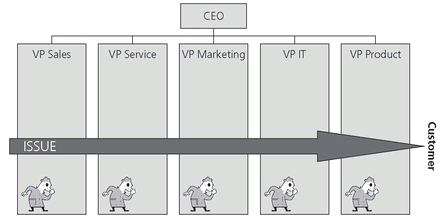WORK ENVIRONMENT
In organizations work is performed at three, and sometimes four, levels:
1. Individual/teams: the worker level
2. Operations/process: the work level
3. Organization/enterprise: the workplace level
4. Society: the communities served, the world
Performance consultants determine where issues originate and how they permeate the various levels to make sure that our investigations are complete. A client may, for example, identify an issue as originating with an individual worker or a work group. We may dig deeper to discover that, while the issue affects individual workers, its source is a work procedure at the process level. Then we strategize differently based on where the issue “lives.” One strategy for a performance issue that originates at the individual or worker level is to raise its level to make it more visible and thus gain additional support for resolution.
At the work or process level, we identify all the functions impacted by the process under investigation, working horizontally to ensure that relevant stakeholders are partnering to make the needed changes.
For a workplace or organizational level issue, we show how it impacts the entire enterprise, including suppliers, customers, and the competition.
For many years Roger Kaufman has brought our attention to working at the societal level (Kaufman, 2006). In his most recent book, Thomas L. Freidman presents his argument for a green revolution (Friedman, 2009). Many organizations today acknowledge society as a fourth level where they, as good corporate citizens, can make valuable contributions to the environment, the economy, and to the communities they serve. This service may involve encouraging employees to contribute their efforts to local charities, such as the Volunteer Day program or the seventy-eight Community Involvement Teams at Levi Strauss worldwide (www.levistrauss.com/responsibility). Another example is through active support of humanitarian issues as with Hewlett Packard’s Design-for-Environment program (www.hp.com/hpinfo/globalcitizenship/environment/productdesign/design.html) that provides environmentally sustainable products through recycling services, or the Siemens Arts Program (http://w1.siemens.com/responsibility/en/citizenship/artsprogram/into.htm) that supports and advances local arts and culture in company locations around the world.
Performance improvement professionals also work at the societal level, using HPT tools and techniques to address broad areas of need in the developing world (Haig & Addison, 2002; Kaufman, 2006).
Whenever possible, performance improvement practitioners expand their work to higher organizational levels to increase the impact of improved performance and add value for the organization. Many practitioners are accustomed to working with individuals or teams to improve performance. However, organizations realize broader, longer-lasting gains in performance improvement when we work across the organization rather than escalating because the customer is ultimately affected (Figure 1.2).
FIGURE 1.2. Worker, Work, Workplace Issues.

..................Content has been hidden....................
You can't read the all page of ebook, please click here login for view all page.
